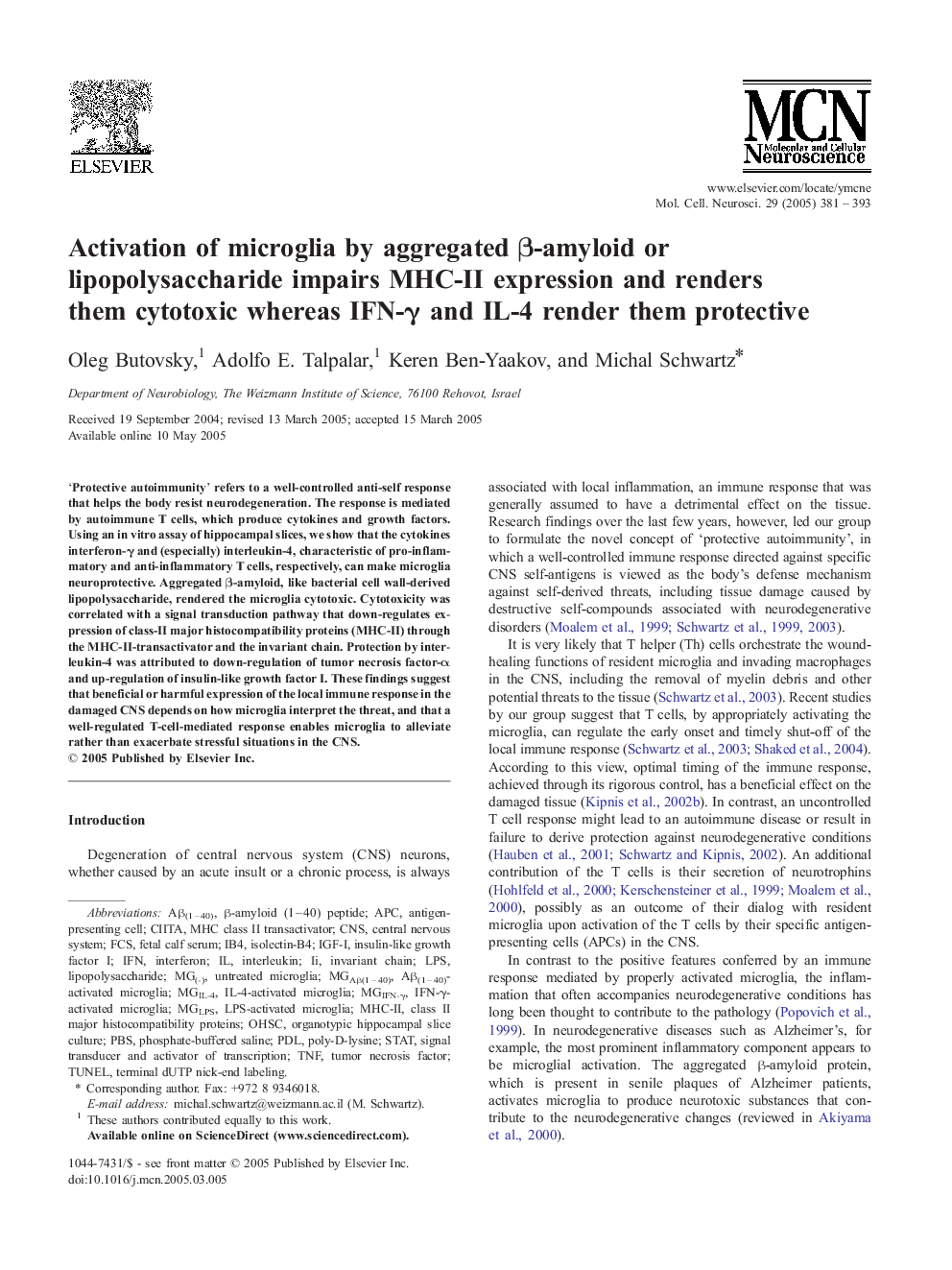| کد مقاله | کد نشریه | سال انتشار | مقاله انگلیسی | نسخه تمام متن |
|---|---|---|---|---|
| 10956888 | 1099462 | 2005 | 13 صفحه PDF | دانلود رایگان |
عنوان انگلیسی مقاله ISI
Activation of microglia by aggregated β-amyloid or lipopolysaccharide impairs MHC-II expression and renders them cytotoxic whereas IFN-γ and IL-4 render them protective
دانلود مقاله + سفارش ترجمه
دانلود مقاله ISI انگلیسی
رایگان برای ایرانیان
کلمات کلیدی
OHSCTerminal dUTP nick-end labelingTNFMHC class II transactivatorPDLMHC-IIisolectin-B4IB4PBSFCSIGF-ILPSAPCCIITA - CITSTAT - آمارantigen-presenting cell - آنتیژن ارائه سلولinsulin-like growth factor I - انسولین مانند عامل رشد Iinterferon - اینترفرونIFN - اینترفرون هاinterleukin - اینترلوکینTUNEL - تونلCNS - دستگاه عصبی مرکزیInvariant chain - زنجیره غیر قابل تعویضfetal calf serum - سرم گوساله جنینcentral nervous system - سیستم عصبی مرکزیtumor necrosis factor - فاکتور نکروز تومورorganotypic hippocampal slice culture - فرهنگ لغت ارگ تیپیک هیپوکامپlipopolysaccharide - لیپوپلی ساکاریدSignal transducer and activator of transcription - مبدل سیگنال و فعال کننده رونویسیPhosphate-buffered saline - محلول نمک فسفات با خاصیت بافریPoly-d-lysine - پلی دی لیزین
موضوعات مرتبط
علوم زیستی و بیوفناوری
بیوشیمی، ژنتیک و زیست شناسی مولکولی
بیولوژی سلول
پیش نمایش صفحه اول مقاله

چکیده انگلیسی
'Protective autoimmunity' refers to a well-controlled anti-self response that helps the body resist neurodegeneration. The response is mediated by autoimmune T cells, which produce cytokines and growth factors. Using an in vitro assay of hippocampal slices, we show that the cytokines interferon-γ and (especially) interleukin-4, characteristic of pro-inflammatory and anti-inflammatory T cells, respectively, can make microglia neuroprotective. Aggregated β-amyloid, like bacterial cell wall-derived lipopolysaccharide, rendered the microglia cytotoxic. Cytotoxicity was correlated with a signal transduction pathway that down-regulates expression of class-II major histocompatibility proteins (MHC-II) through the MHC-II-transactivator and the invariant chain. Protection by interleukin-4 was attributed to down-regulation of tumor necrosis factor-α and up-regulation of insulin-like growth factor I. These findings suggest that beneficial or harmful expression of the local immune response in the damaged CNS depends on how microglia interpret the threat, and that a well-regulated T-cell-mediated response enables microglia to alleviate rather than exacerbate stressful situations in the CNS.
ناشر
Database: Elsevier - ScienceDirect (ساینس دایرکت)
Journal: Molecular and Cellular Neuroscience - Volume 29, Issue 3, July 2005, Pages 381-393
Journal: Molecular and Cellular Neuroscience - Volume 29, Issue 3, July 2005, Pages 381-393
نویسندگان
Oleg Butovsky, Adolfo E. Talpalar, Keren Ben-Yaakov, Michal Schwartz,